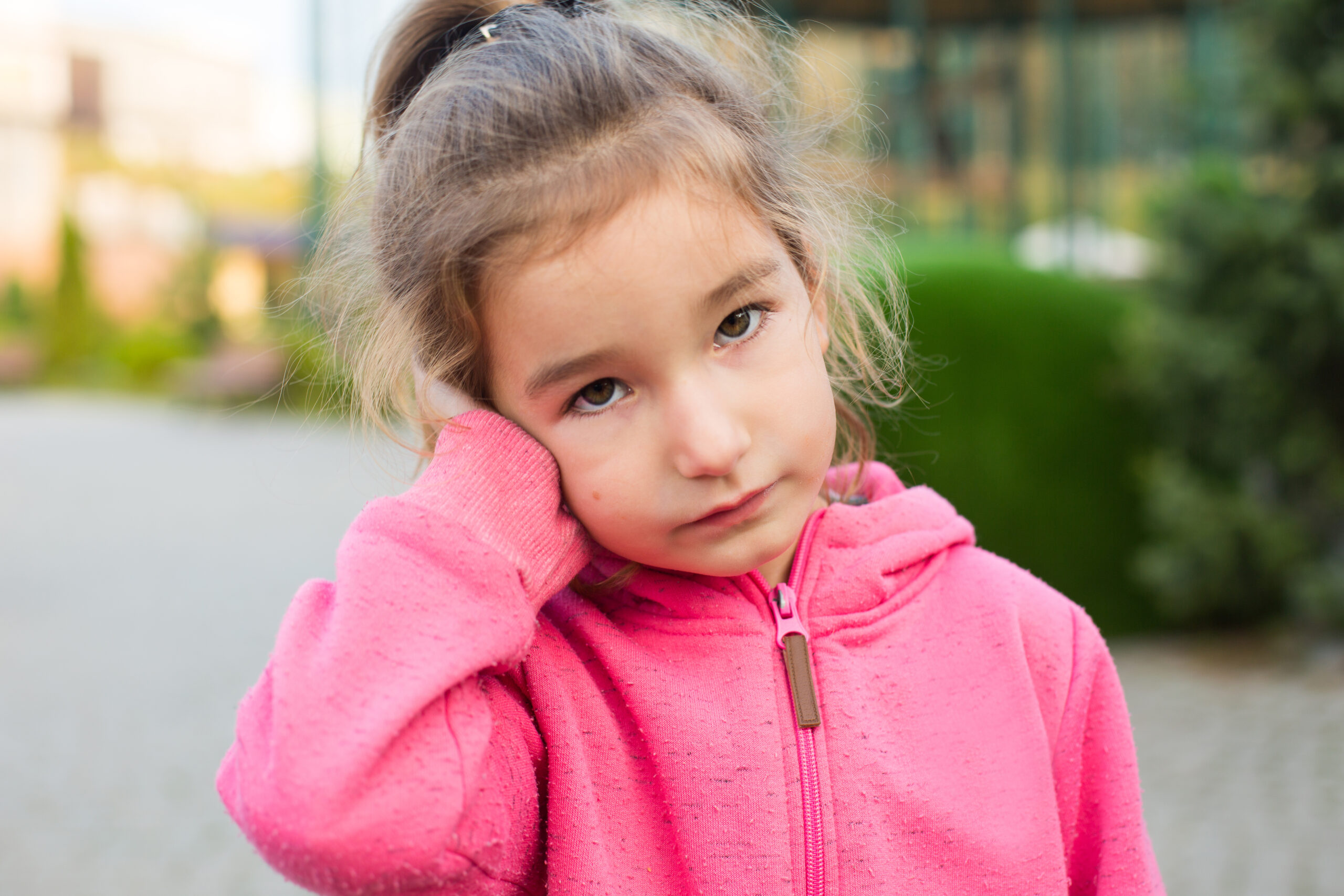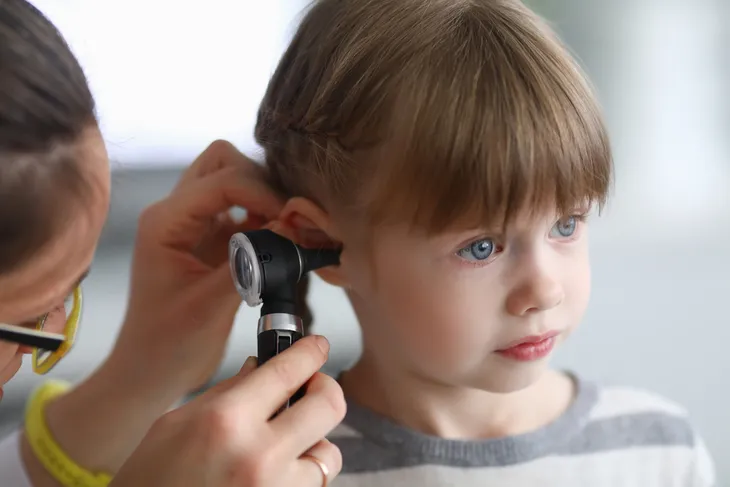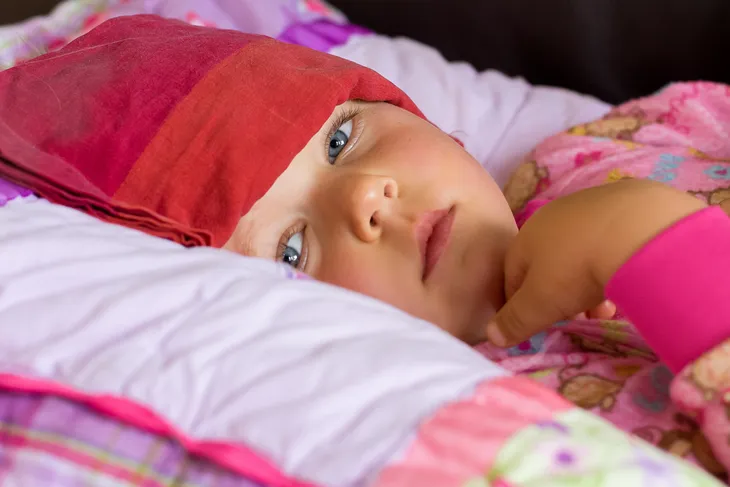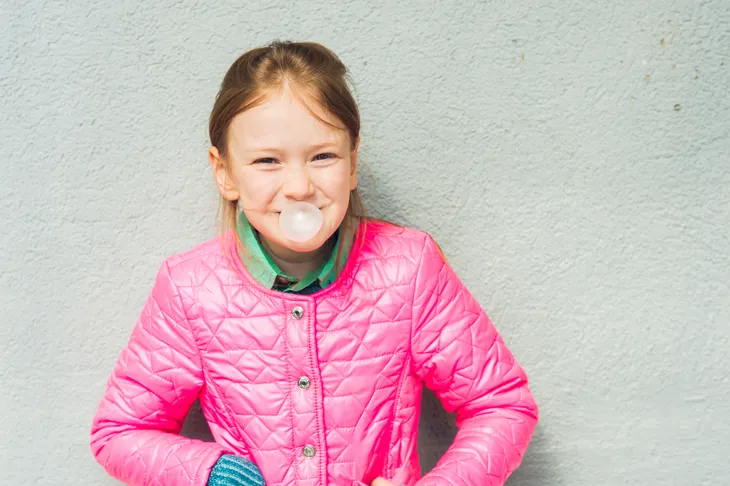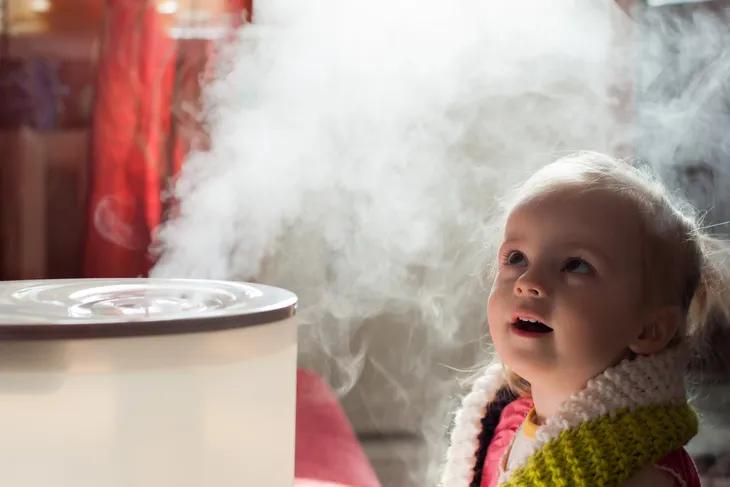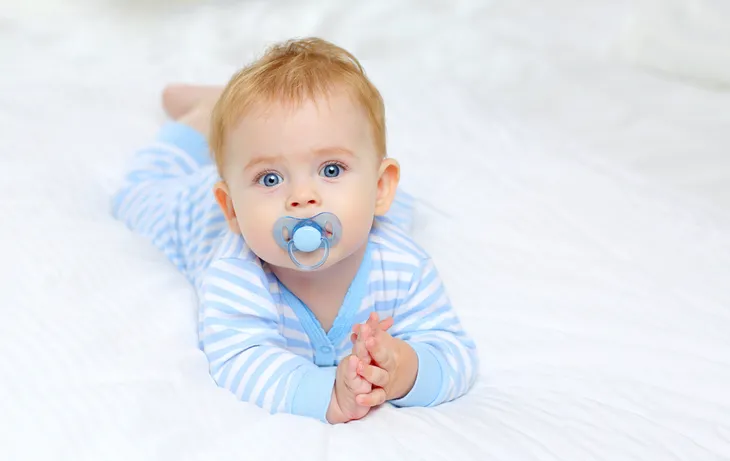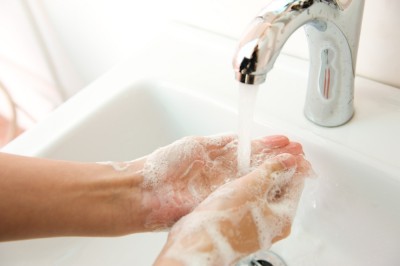- Ear infections are incredibly common. Five out of six children will develop at least one ear infection by their third birthday.
- They can be quite painful but luckily there are ways you may be able to help soothe your child’s ear infection.
- If the ear infection is accompanied by a fever, severe pain, or discharge leaking from the ear then you should take your child to the doctor.
As parents, we’ve all experienced sleepless nights, non-stop crying, and emergency trips to the pharmacy and doctor because our child is suffering from a painful ear infection. They’re incredibly common. In fact, the National Institute of Health (NIH) says five out of six children will develop at least one ear infection by their third birthday.
Most ear infections develop after a cold, allergies, or a sinus infection, which can cause the eustachian tube to become inflamed and fluid to accumulate in the middle ear canal (an ear infection referred to as otitis media with effusion) or a mixture of fluid and bacterial infection to accumulate in the middle ear cavity (referred to as acute otitis media ear infection). Seeing your child in pain is not a nice experience. Luckily, there are steps you can take to help provide a bit of relief.
Symptoms to Look Out For
Earaches can be painful for your little one and if they can’t quite communicate verbally it’s important to watch out for the signs that they have an infection. Earaches can cause varying symptoms from irritability to disruptions to their sleep.
Another telling sign of an ear infection to look out for is if they’re pulling or batting at their ear. Healthline says you should also be on the lookout for fever, loss of appetite, and fluid draining from their ear. In some cases, ear infections can cause dizziness. If your child is wobbly when walking, this may indicate an infection.
Now that you know what to look out for, let’s take a look at how you can help ease their discomfort.
Apply a Warm Compress
One of the first remedies you can try is applying a soft, warm compress to your child’s affected ear. Moisten a towel with warm (not hot!) water and be sure to test it on your skin first – after all, you don’t want to cause them more pain!
Healthline says you can try placing the warm compress over your child’s ear for about 10 to 15-minutes. The warm sensation may help reduce their pain.
Elevate the Head
Keeping your child’s head slightly elevated with a soft pillow or blanket can ease some of the pressure during naptime and bedtime. This is only suitable for children over the age of 2-years old.
For babies, place them snuggly to nap in a car seat to keep their heads elevated safely. If their crib is adjustable, you can slightly elevate it at the head. Healthline says you can also place a pillow or two under their mattress to keep their head elevated. However, never place the pillows under their head.
Drink Plenty of Fluids
While your child is battling an ear infection, be sure to offer them plenty of fluids. The act of drinking and swallowing can help open the eustachian tube, allowing fluid accumulation to drain from the middle ear. In turn, this may help provide your child with some relief from a middle ear infection.
It’s best to try and stick to water but if your child is picky you can provide them with other fluids. Some of these include diluted fruit juices, soup, or broth.
Chewing Gum
Older children can be given a piece of sugarless gum to chew while supervised. Again, the act of chewing and moving the jaw muscles will often open swollen eustachian tubes enough for some fluid and infection to escape from the middle ear.
WebMD also points out that a research group in Finland found that chewing xylitol-sweetened gum may help prevent ear infections from developing in the first place. The research suggests xylitol (also known as birch sugar) may prevent the bacteria that cause ear infections from growing. Just be sure to keep it away from your dogs as xylitol is extremely toxic to them.
Refrain from Prone Bottle Feeding
Bottle-fed babies are more likely to suffer more pain with ear infections if they feed and fall asleep lying down. This prone position can cause milk to drain through the eustachian tube and into the middle ear, where it places further pressure on the eardrum or worsens the bacterial infection.
If your child has an ear infection or is prone to frequent ear infections, bottle-feed them while holding them upright.
Steam
Steam can open and relax airways which can reduce ear pressure and pain. Use a steam shower, humidifier, or a warm bath to ease ear infection pain. The steam can also help thin secretions making it easier to get more out when a child blows their nose.
Humidifiers are a great tool to have on hand with small kids (and even for adults too). They come in a wide range of prices, but for those who don’t want to spend any money, a steamy shower works just as well.
Remove Pacifier
While the act of chewing can sometimes free up pressure in the middle ear, the act of sucking on a pacifier can cause fluid accumulation (via the nose and throat) into the middle ear.
Furthermore, if the pacifier contains bacteria, that may also travel with the fluids to the middle ear and cause a severe infection. With this in mind, if your child normally uses a pacifier and develops an ear infection, take the pacifier away. And if they get frequent ear infections it may be time to get rid of the pacifier for good.
Avoid Secondhand Smoke
Children should never be exposed to secondhand smoke. If you smoke around your child the risk for frequent and more severe ear infections doubles. In fact, the Centers for Disease Control and Prevention (CDC) says there is no risk-free level of exposure to secondhand smoke.
Secondhand smoke doesn’t just increase your child’s risk of ear infections, but it can also cause other health problems too, such as frequent and severe asthma attacks, respiratory infections, and SIDS, says the source. If you smoke and have children, it’s time to quit. At the very least do not expose your children to secondhand smoke.
When to Consult a Doctor
Ear infections often clear up on their own within 2 or 3-days, explains Kids Health. However, some ear infections do warrant a doctor’s visit.
First, you should consult your doctor if you’re worried about the infection. You should also take them to a doctor if the pain becomes severe, or if there is a discharge of blood or pus leaking from the ear. If your child is younger than 6-months old and has an ear infection, or if they’re older than 6-months old with an ear infection and a fever for more than 48-hours then you should take them to a doctor.
Are Antibiotics Necessary?
Oftentimes, pediatricians won’t prescribe antibiotics unless an ear infection is severe or if the child gets a lot of ear infections. Caring for Kids says doctors will usually wait for 24 to 48-hours to first see if the infection improves on its own, especially “if a child doesn’t have too much discomfort or a high fever.”
If your child has a moderate to severe ear infection with a high fever (more than 102.2-degrees Fahrenheit) then antibiotics may be necessary. They may also be needed if your child has severe pain or if their symptoms don’t improve naturally within 48-hours.
Preventing Ear Infections
Ear infections can’t always be prevented, however, Healthline says there are some steps you can take to help reduce your child’s risk. For starters, try your best to reduce their exposure to cold and flu bugs. If friends or family members are sick, avoid visiting them until they are feeling better. If other family members in your household are sick, be sure to teach your children proper handwashing and why it’s important.
The source also says you should make sure your child’s immunizations are up-to-date. This includes flu shots (for children 6-months and older) as well as pneumococcal vaccines. Talk to your doctor about vaccines for your children.
